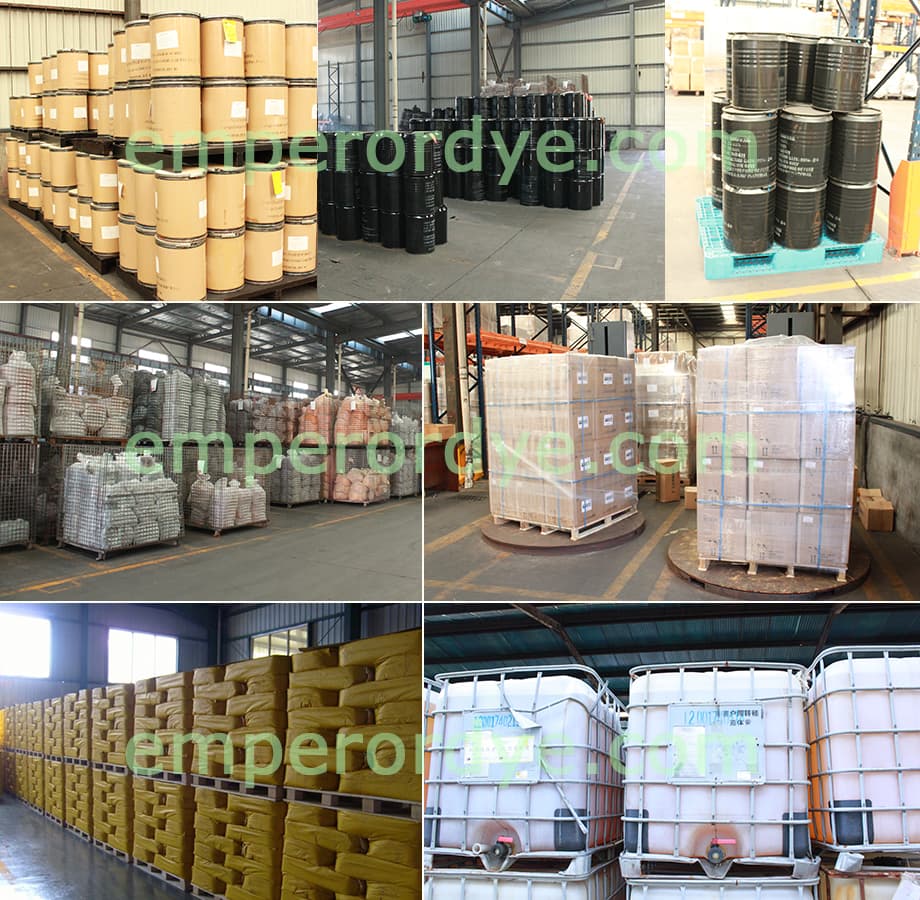Application and parameters of Direct Blue 71
Direct Blue 71
- TRADE NAME:
- Direct Fast Blue B2RL
- Direct Blue B2RL
- Ambidirect Blue R
- Bitafast Blue GLL
- Blue 2-RL
- Chrochem Direct Blue BRR
- Direct Blue B2RL
- Direct Blue FFC
- Direct Blue GLL
- Direct Light Blue FRL
CAS NO: 4399-55-7
CI.NO: 34140
Direct Blue 71 Physical and Chemical properties
| Density | 1.31 |
| Dyeing Depth % | 2 |
| Light Fastness | 5-6 |
| Washing Fatness | 3-4 |
| Rubbing Fastness(dry) | 4 |
| Rubbing Fastness(wet) | 2-3 |
Application Features
|
Solubility(g/L) |
SDC classification |
displacement(grade) |
metal ion effect(grade) |
discharge property(grade) |
other features |
||
|
copper |
iron |
neutral |
basic |
||||
|
20(97℃) |
B |
2~3 |
4~5 |
4~5 |
4~5 |
4~5 |
— |
Colour Fastness Test
|
sun exposure |
soaping |
flooding |
perspiration |
rubbing |
ironing |
acid and alkali resistant |
|||||||
|
standard depth |
1/12 depth |
original color change |
white fiber stained |
original color change |
white fiber stained |
original color change |
white fiber stained |
dry |
wet |
sulfuric acid |
acetic acid |
soda ash |
|
|
5 |
— |
1~2 |
1 |
3 |
1~2 |
3 |
1 |
4~5 |
2~3 |
4 |
1 |
3~4 |
5 |
Direct Blue 71 alias direct light blue B2RL, direct light blue B2R. The appearance is generally blue gray uniform powder. Water soluble, soluble in water blue, slightly soluble in cellosolve, very slightly soluble in alcohol, Insoluble in other organic solvents. The dye is blue to grayish black in concentrated sulfuric acid, red-violet purple precipitate after dilution; dark brown in concentrated nitric acid; insoluble in concentrated sodium hydroxide; blue-violet in concentrated ammonia. The aqueous solution added with concentrated hydrochloric acid has a blue precipitate, and the concentrated sodium hydroxide has a red-violet purple precipitate. The copper and iron ion shades slightly change.
Direct Blue 71 Application:
Widely used in viscose fiber dyeing, also used in viscose/PVA blends, cotton, and the carpet of dyeing and printing. Also used in leather, paper, soap, cheese, protein and formaldehyde resin color.
Use condition:
1. The dyed cotton or viscose fiber has a reddish-dark blue color. The dyeing rate is good, the transferability and levelness are poor. When dyeing, it is advisable to add salt to control the dyeing to obtain uniform color. After the dyeing stage, the dyeing solution should be naturally cooled to 80 ° C, which is beneficial to the dye exhaustion. After dyeing, the color light micro green is finished by urea-formaldehyde resin, and the color is brightly changed to green by the cyanoaldehyde resin; the red color is treated by copper sulfate, and then the resin is finished. , its sun fastness is not affected.
2. Used for dyeing rich fiber, the dyeing rate is very good, the color light is slightly darker than cotton. It can also be used for dyeing silk and its fabric, dyeing bath plus Yuanming powder and acetic acid. When dyeing vinyl fabric, dyeing The rate difference is lighter than blue. When cotton, viscose fiber and other fibers are dyed in the same bath, the wool is lighter than cotton and viscose fiber, the silk is lighter, the nylon is heavily stained, the second vinegar fiber, the three vinegar fiber, the polyester fiber. Acrylic fiber is almost non-staining.
3. Direct Blue 71 can be mixed with disperse dye in high temperature dyeing and blending fabric. The dyeing bath is heated to 120 °C under neutral conditions, or loaded with boiling dye. After the dye is dyed with polyester, the temperature is continued. After dyeing for half an hour, the cellulose fibers are fully colored, and the dye is exhausted, and the color light is substantially unchanged.
4. Used for continuous padding of cotton. After padding, it is treated with 10~25g/L yuan powder boiling bath, then steamed at 100~103°C for 1-3 minutes.
5. Used for direct printing of cotton or viscose fabric. When printing deep pattern, add urea and disodium hydrogen phosphate to prepare the printing paste.
Packing:

20 or 25kg/compound bag, carton box, iron drum, fiber durm for powder dye and 1000kg/tank for liquid dye
Direct Blue 71 Material Safety Data Sheet (MSDS)
- Inquiry for Direct Blue 71
- Question: *
- You can learn about other products:
- Direct Blue 86
- Direct Blue 106
- Direct Blue 108
- Direct Orange 26
- Direct Orange 39
- Direct Blue 15
- Direct Blue 6
- Direct Green 6
- Direct Violet 12
- Direct Violet 9
Products Catalog
- solvent red 24
- solvent red 49
- solvent red 122
- solvent red 111
- solvent red 146
- solvent red 195
- solvent yellow 21
- solvent yellow 33
- solvent yellow 93
- solvent yellow 98
- solvent yellow 114
- solvent orange 60
- vat red 41
- solvent green 3
- solvent green 5
- solvent blue 70
- solvent blue 104
- solvent black 3
- solvent violet 31
- solvent violet 13
Copyright right HANGHZOU EMPEROR CHEMICAL CO,,LTD © 2019 All rights reserved.

 Pусский
Pусский